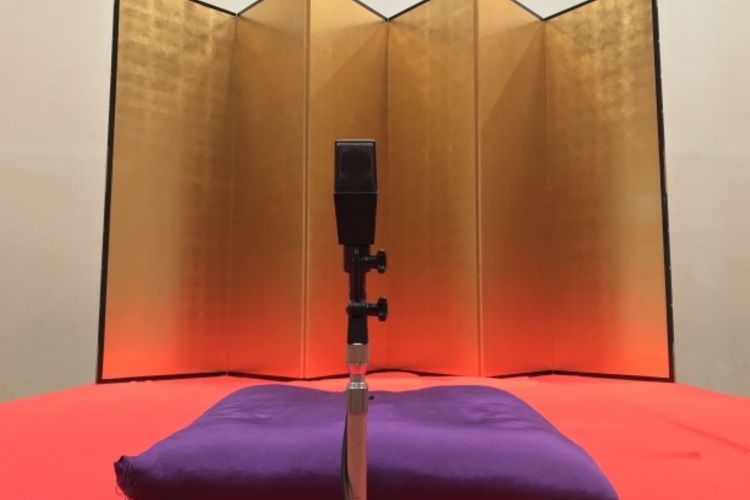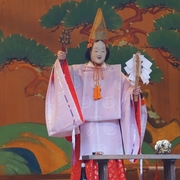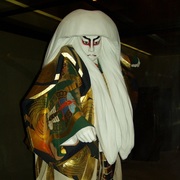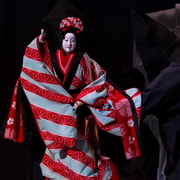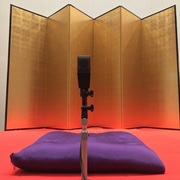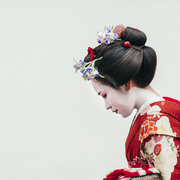After experiencing rakugo on TV or radio, many people seem to take an interest in the live performance.
However, most people do not know where to go and how to get tickets.
If you are interested in rakugo, please read on this article to get the gist of it!
What Rakugo is all about?
Rakugo(literally "fallen words" 落語)is a form of Japanese verbal entertainment, which can be described as Japanese sit-down comedy or comic story telling.
It is just as there is stand-up comedy in the western countries.
The lone storyteller, who is called rakugoka or hanashika, sits on a floor cushion (“zabuton” in Japanese) on stage, and talks, delivering a long and complicated comical or sometimes sentimental story.
The story always involves a dialogue between two or more characters.
Hanashika plays the role of all the characters only through a change in pitch, tone, and a slight turn of the head, which is different from Koudan, a style of traditional oral Japanese storytelling.
All time TV rakugo comedy called “Shoten(笑点)” is broadcasted on Sunday evenings throughout Japan, in which a host put questions to a panel of fellow hanashika who must produce a funny or witty response.
Each session is about 15 minutes.
The host gives three questions to six hanashika.
Each hanashika needs to answer at least one.
At the end of each session, the host decides a winner and how many cushions go to whom, depending on the quality of the answer, the response from audience, and the admiration of the host.
With this, rakugo might have been misinterpreted as a cushion competition.
Rakugo is an all-time entertainment in Japan.
However, it has not yet experienced its hay day like a record- breaking boom.
Apparently, the current rakugo boom originates in a TV drama, “Tiger and Dragon” broadcasted in 2005, and a NHK serial TV drama, “Chiritotechin” in 2007.
Recently, an animation, “Showa Genroku Rakugo Shinjyu” which is an adaptation of a cartoon, has been popular among females in particular, and has contributed to an increase in rakugo lovers.
Entertainment theaters are always busy as the Japanese are keen on rakugo.
Alongside, the number of hanashika has also risen.
Why is it so popular?
It is partly because the Japanese think that rakugo is one of the hobbies for the intelligent.
Rakugo with a 300 year tradition has such an intellectual aspect, so that it is a sophisticated and profound entertainment.
That said, it is not hard to understand it. Even novice can enjoy rakugo.

What should you prepare for Rakugo?
Japan has many traditional performing arts, such as koudan(講談), kabuki(歌舞伎), bunraku(文楽), noh(能), roukyoku(浪曲), and gidayu(義太夫).
Some arts are not so enjoyable without having the background knowledge.
For example, kyogen(狂言), a traditional comedy, requires the background information despite being the same genre as rakugo.
On contrary, rakugo is a performing art mainly spoken in the modern Japanese language.
I cannot deny that rakugo does not use classical Japanese.
However, as long as your linguistic level is near to that of the natives, you will understand the entire story.
Even kamikata rakugo, characterized with a kansai(the west part of Japan) dialect, is understood by modern Japanese people.
Hanashika steps up to a stage (kouza), while music (debayashi) is being played by a traditional Japanese musical instrument called shamisen, and the hanashika sits on a floor cushion on the stage, then bows to audience once.
Next, the hanashika starts a makura session, taking up a daily life topic.
In many cases, the makura session connects to the following story.
Hanashika tends to bring a familiar topic which he has seen or heard to cater for his audience, such as a story about a stingy, a snobby, or a cheeky kid.
Hanashika uses makura to lead the audience to a main story smoothly.
During the session, hanshika often takes off his jacket (haori), and starts kobanashi which is a short comical vignettes ending with a narrative stunt called ochi linking to his following rakugo.
A hanashika performs several characters during kobanashi and the main story, which is a typical feature of rakugo.
You may start to worry whether you can understand it.
However, it is not hard to find the change from one character to another.
When watching professional rakugo, you will perceive each character alongside his performance.

The Stage of Rakugo
Rakugo’s plots come from daily life or non-daily life events of the Edo(1603-1867) or Meiji Period(1868-1912), so that beginners may feel uncomfortable.
Hanashika sometimes brings a story of a red light district, which is unimaginable for modern people as it no longer exists.
In such a case, the story-teller simply explains the background information in advance.
Rakugo depicts humanity and humor which is part of human nature remaining unchanged over time, so that historical background is not a matter for rakugo.
Rakugo is not a performance art requiring complexity or difficulty.
Shinsaku rakugo (new rakugo) which narrates a comical story about modern people is as much popular as Koten rakugo (classical rakuto) specializing in life events of the Edo or Meiji Period.
The most important thing for beginners is to enjoy the performance without worrying.
In general, rakugo aims to make audience laugh with funny stories, called “kokkeibanashi”(滑稽話), but sometimes a sentimental story, called “ninjyobanashi”(人情話), is performed to makes them to feel moved.
That said, it is hard to tell kokkeibanashi from ninjobanashi as many storylines have the both aspects.
Therefore, in terms of a story, fun lovers are never disappointed with rakugo.
When you feel funny at a theater, why not laugh as much as you want?
While laughing, you will find out hanashika’s humorous insights into human nature and the fact that the frequency of audience’s laugh is not always important.
The Manner of Rakugo
People who do not know about the manner of rakugo are likely to hesitate to watch its live, but the manner is not complicated.
If you are not the person who follows below, you are a good audience.
・Keep chatting with the person next to you.
・Send a strange yell to a hanashika.
・Laugh or react in a wired way.
・Snore while sleeping (you can sleep during performance).
・Wander around seats in a hall during performance.
・Interrupt with your mobile phone (e.g. a phone call)
Rakugo Theaters in Tokyo
In Japan, rakugo is available at many places on a daily basis.
Even if you live in a remote area, you can still go to rakugo events of famous hanashika appearing in Shoten.
It is a good idea to make a debut as an audience of rakugo there.
Another is going for a theater specialized in rakugo, what is called “Yose”(寄席).
Yose is a permanent entertainment theater for rakugo, but some of which hold manzai, a traditional style of stand-up comedy as well.
Yose theaters, are located in Tokyo, Yokohama, Nagoya, Osaka, Kobe and Sendai, and hold rakugo regularly.
Especially, Tokyo where rakugo has been flourishing the most has numerous theaters.
If you have chance, why not try the following big four theaters:
・The Suzuki Engeijo in Ueno,
・The Asakusa Engei Hall,
・The Shinjuku Suehirotei,
・The Ikebukuro Engeijo.
The fees for rakugo are normally cash only on the day.
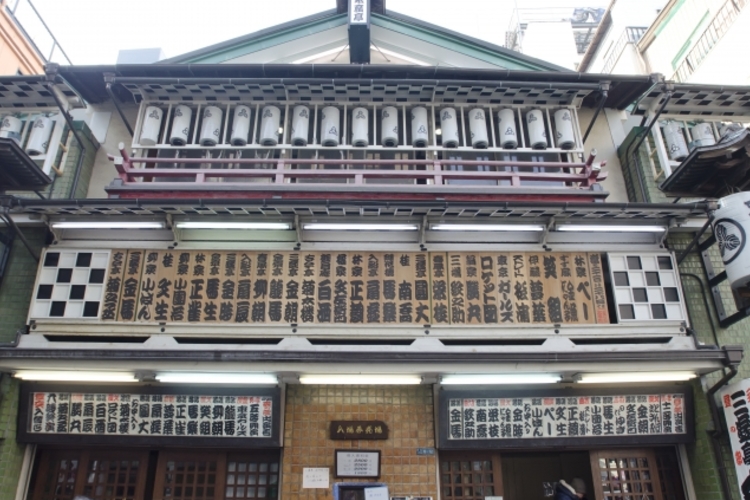
Each yose theater is unique.
For example, the Shinjuku Suehirotei with classic attire has a unique seat equipped with a low table over a hole in the floor, which attracts untold numbers of audience.
At which, as an interval between each performance is shorter, more hanashika appears on stage than other theaters.
The Ikebukuro Engeijo is favored by guru because of the longer intervals.
In which, you can watch live shows all day along, except for a few days at the end of December.
Also, bear in mind that “Yoichikai” which is monthly held on 31st offers special price and program.
At the Suzuki Engeijo and the Ikebukuro Engeijo, either of afternoon show or evening show is available between 21st and 30th every month.
Other yose theaters basically allow audience to stay from noon to 9 pm, but from my experience, it may not be a good idea to stay so long because you will be tired.
A rakugo program is designed to end with a fantastic finale of a master hanashika in both of afternoon and evening show.
However, you do not need stay until the finale.
It is not rude to go in and out of a theater at your convenience.
Besides, in order to hold audience’s attention throughout the live performance, a variety of entertainments called iromono are performed, manzai, mandan, kijutsu, kamikiri, and daikagura, for example.
Apart from those yose theaters, the National Engei Hall is another choice for beginners.
The theater is located in the corner of the National Theater of Japan where it is within walking distance from the subway station of Nagata cho or Hanzoumon.
This Engei Hall holds rakugo in the afternoon from 1st to 20th every month, but only reserved seats are available.
Don’t forget to purchase a ticket via online or phone in advance.
Rakugo is a Fun and Profound Entertainment
If you are interested in rakugo, why not try a yose theater?
I suppose that many people would like to see popular hanashika, but it may be difficult to make up your mind because of so many choices.
To make it easy, if you are a first-time goer, how about going for a less busy theater?
But, bear in mind! Avoid New Year holidays and summer obon holidays.
During which, almost every theater is very busy with special events.
If you are not lucky, you may come across a boring rakugo live but do not make a hasty judgement, “rakugo is rubbish.”
Open your mind and learn the system of rakugo at first.
How about going to an evening show next?
It is normally calmer and more enjoyable.
Hanashika’s originality has an influence on a theater’s uniqueness.
Many enchanted rakugo fans never fail to go a theater monthly.
As for the format of rakugo, seven or eight hanashika appear on stage separately, and each performs generally 10-15 minutes in length, and the last performance, so-called, a grand finale, is 40 minutes.
Rakugo is the main entertainment of yose, besides, audience have a fun opportunity to see other entertainments, such as manzai, majic, and koudan.
One more thing you need to know is Rakugokai, which is a rakugo show held at various places, not at yose theaters, gives you another rakugo experience.
The format is that one or a few hanashika perform one or two rakugo respectively.
Once you find your favorite hanashika, it is worthwhile visiting rakugokai?
There are many famous classic rakugo stories, such as Jugemu.
How about checking them out with books or via online?
As you learn more, the more you will enjoy!

